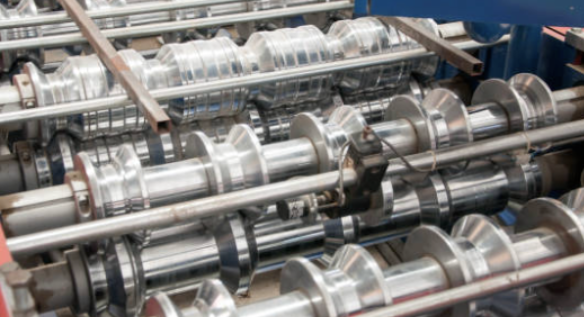
Posted on Wednesday, October 30, 2024
The Growing Demand for Roll Forming Machines in Ethiopia’s Expanding Construction Sector
Ethiopia’s construction industry has seen rapid growth in recent years, driven by significant infrastructure projects, urbanization, and investments in real estate and industrial facilities. This growth has created an increasing demand for durable, cost-effective materials, particularly in the construction of roofing, building frames, and various other structural components. One of the most effective solutions to meet these demands is the roll forming machine.
Ethiopia has embarked on an ambitious journey of economic development, with construction at the forefront. From residential buildings and commercial spaces to large-scale industrial and infrastructural projects, the construction sector is booming. This growth is propelled by government-led initiatives like the Grand Ethiopian Renaissance Dam, as well as a push towards urbanization and the expansion of industrial parks. The rapid pace of these projects calls for materials that are both efficient and robust, setting the stage for roll forming machines to play a crucial role in meeting this demand.
Roll forming machines are essential in producing components widely used in modern construction. Here’s how roll-formed materials contribute to Ethiopia’s infrastructure needs:
As Ethiopia continues its infrastructure expansion, local businesses and contractors have recognized the need for efficient production methods. Roll forming machines provide several advantages that align well with the goals of Ethiopia's construction sector:
As Ethiopia’s construction industry continues to grow, the demand for reliable, affordable, and locally-produced materials will only increase. Roll forming machines provide a strategic solution, equipping the sector with the tools needed to support the country's ambitious development goals. By focusing on quality and efficiency, roll-formed materials contribute to the sustainable, resilient infrastructure Ethiopia needs for long-term growth.
In conclusion, with the right investments in roll forming technology, Ethiopia’s construction sector can continue to thrive, meeting the demands of urbanization and development with durable, high-quality materials essential for building the nation’s future.

Understanding Coil IDs, Mandrel Sizing, and Shear Pin Safety in Uncoilers
Posted on Wednesday, October 1, 2025
Mismatched sizes can lead to machine damage, downtime, and safety hazards — often evidenced by a shear pin failure.

How Coil Tensile Strength Affects Roll Forming and How to Adjust Your Machine
Posted on Wednesday, October 1, 2025
Changes in tensile strength can significantly affect the finished profile, causing misaligned bends, uneven edges, and out-of-spec parts.

Why Paint Cracks on an Embossing Line Running Pre-Painted Coil and How to Prevent It
Posted on Wednesday, October 1, 2025
This issue not only affects the visual quality of the product but can also lead to increased scrap rates and customer complaints.

The Most Popular Standing Seam Metal Roof Panels in the U.S. — A Comprehensive Guide
Posted on Monday, September 29, 2025
In this post, we’ll explore what panel styles and sizes are most popular in the U.S